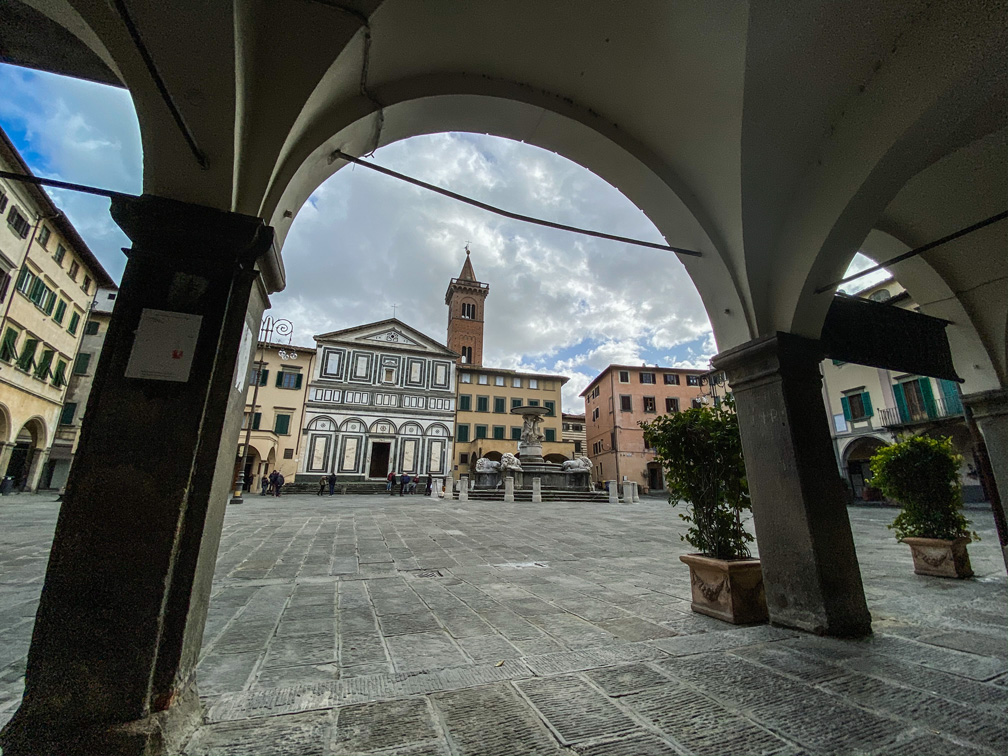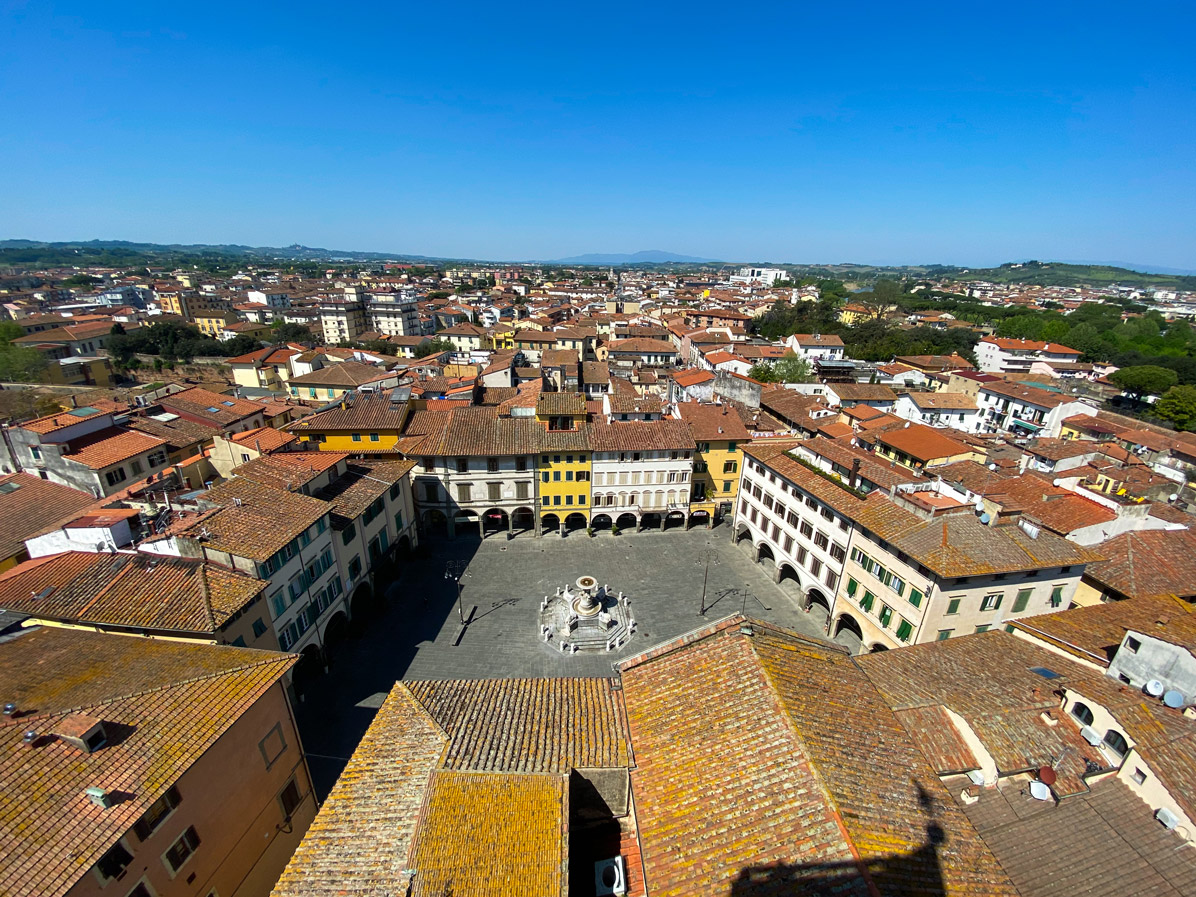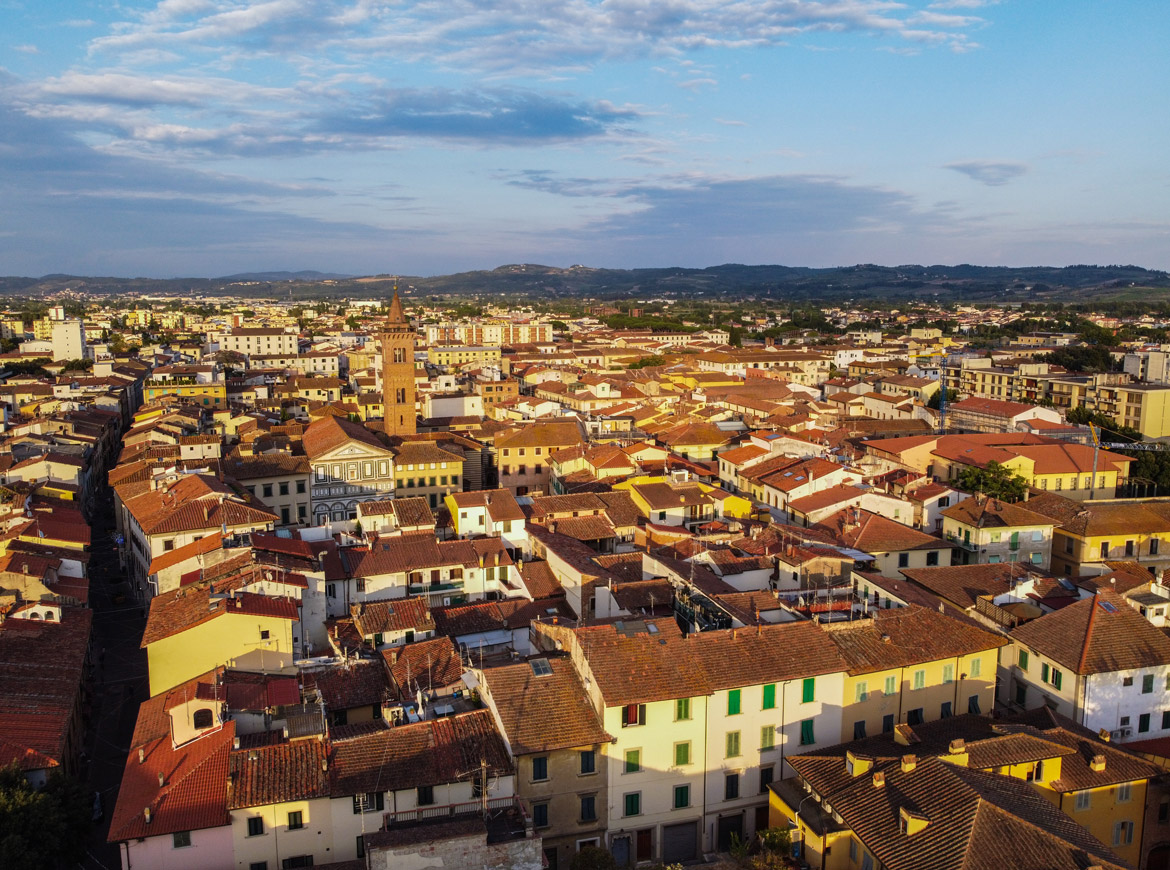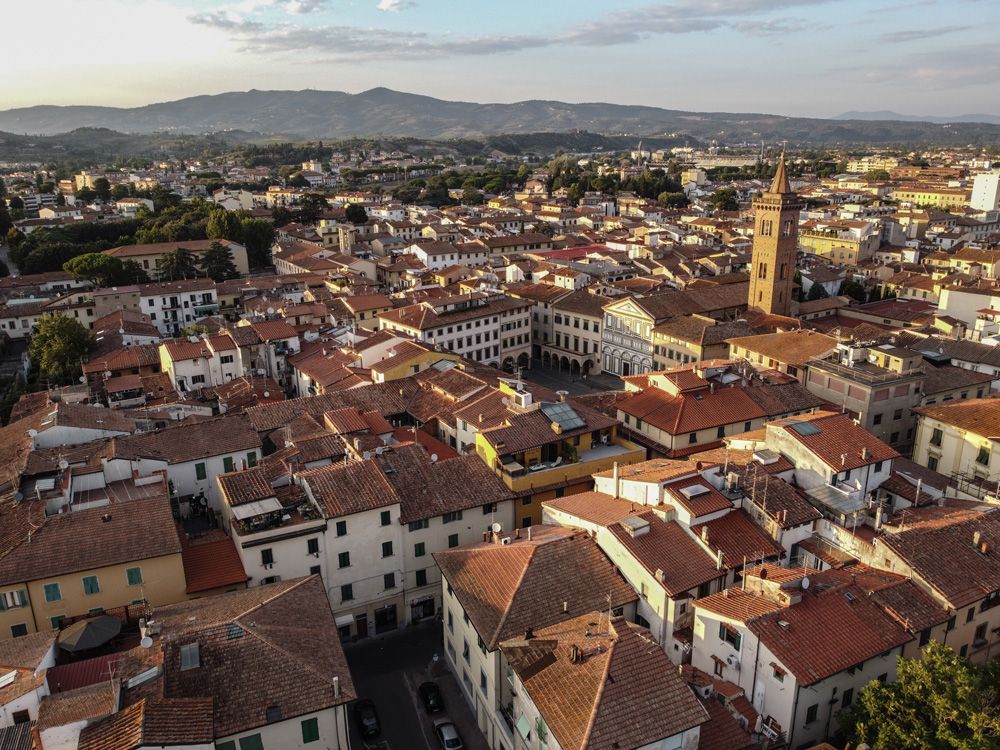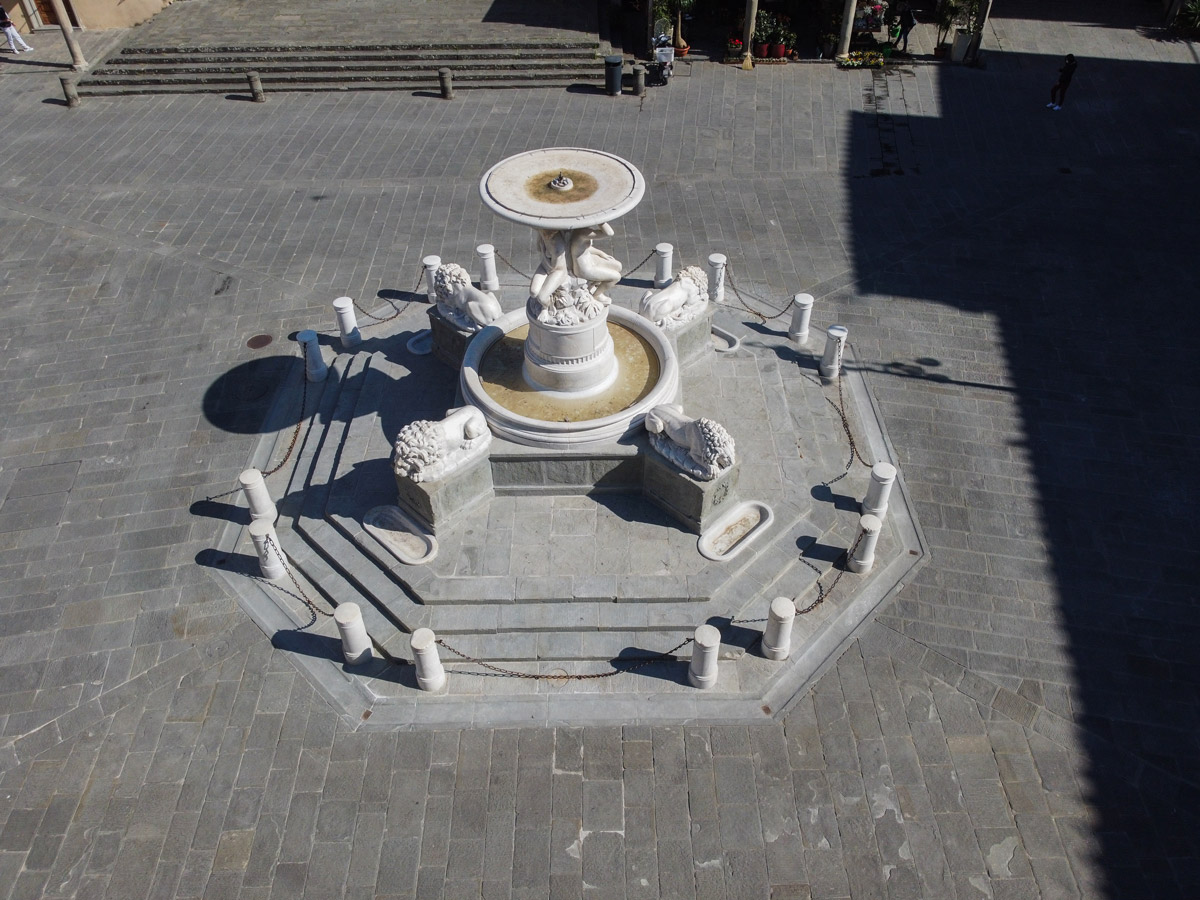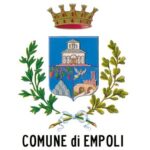The oldest archaeological finds that allow us to date the first traces of the settlement of the Empoli area date to the Middle Palaeolithic (100,000 – 40,000 years ago), when numerous animal species, ideal prey for primitive tribes, lived in the region’s forests.
The necropolis of Martignana provides evidence that the area was inhabited by Etruscans starting in the late 7th century BCE, and objects found in the city’s old town confirm that this merchant population was the first to use Empoli as a port of call for the river network.
Starting in the Roman age, the finds become more substantial and reveal that Empoli was a wealthy, vibrant business centre where goods were sorted that had come by river from Pisa and were headed to Florence and Fiesole. An object representative of this period is the Empoli Amphora, made between the 2nd and 6th century BCE to preserve and transport local wine to the rest of the empire.
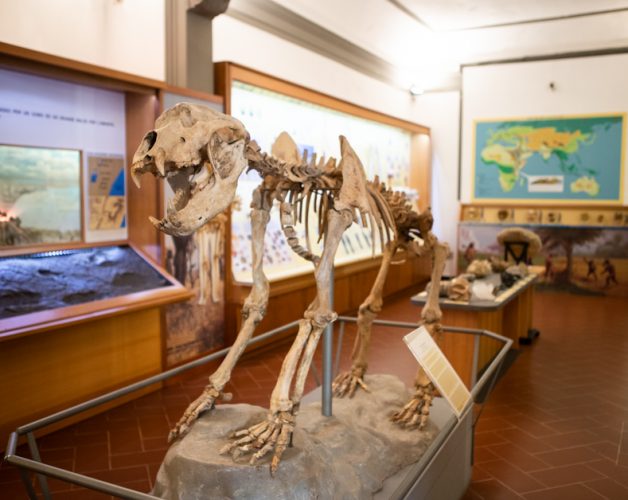
One historical object of extreme interest for reconstructing the history of Empoli is the Tavola Peutingeriana, a medieval copy of a kind of “Roman road map” where, along the Arno River between Florentia and Pisae, we find the toponym “In Portu”, which historians believe might refer to Empoli.
The existence of numerous churches dedicated to St Michael the Archangel and toponyms of Germanic origin, such as Monterappoli, Montepaldi and Riottoli, are evidence of the Longobard presence in Empoli.
The most important written evidence of the existence of the Pieve di Sant’Andrea is a papal bull of 1059 in which Nicholas II conferred the Empoli church the right to collect rent and tax. During this period, work began on the collegiate church, which, with its famous Florentine Romanesque façade, remains today the symbol of the city of Empoli.
In 1119, the fortification began, following an agreement between the Guidi counts and the parish priest Rolando that aided the process of moving the population from the surrounding areas to the urban centre around the parish church.
In 1260, Empoli hosted the Ghibelline Congress, during which, as we read in Dante, Farinata degli Uberti successfully opposed the destruction of Florence, following its defeat at Montaperti.
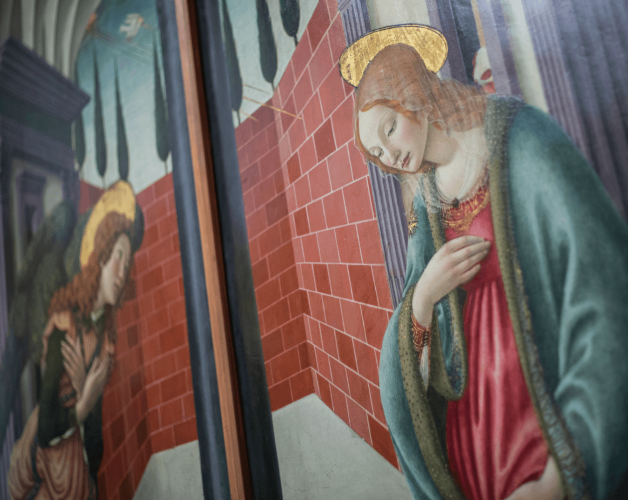
The 14th and 15th centuries were a period of economic growth for Empoli and art flourished as a result. Drawn by the wealth of commissions and patrons, artists of the calibre of Lorenzo di Bicci, Lorenzo Monaco, Masolino da Panicale, Bernardo and Antonio Rossellino and Francesco and Raffaello Botticini came to work in the city.
The works of medieval and Renaissance religious art that once adorned the altars of Empoli churches are now mostly preserved in the Museo della Collegiata di Sant’Andrea. And the nearby church of S. Stefano degli Agostiniani still preserves a few traces of extraordinary frescoes by Masolino.
In the hamlet of Pontorme, and a short walk from the childhood home of Jacopo Carrucci, better known as Pontormo, one can still see his early 16th-century panel paintings of St Michael the Archangel and St John the Evangelistin the church of San Michele.
After the Medici domination and that of the Florentine Republic, for which Empoli suffered a ruinous siege in 1530, the city was subject to Leopoldine reform under Hapsburg-Lorraine rule, which merged Empoli, Pontorme and Monterappoli into a single community in 1764.
During the Napoleonic age and the suppression of the religious orders, objects taken from the convents and monasteries were gathered in the Museo della Collegiata di Sant’Andrea, founded in 1859 on the initiative of Vincenzo Salvagnoli, minister of foreign affairs at the time and a fervent supporter of the movement for Italian Unity.
Towards the middle of the 19th century, the expansion of the city beyond its walls, construction of the Leopoldine railway and that of the bridge over the Arno allowed Empoli to more fully exploit the possibilities offered by its extraordinary geographic position.
The city expressed its vocation for craft and industry most strongly after World War II and during the Italian economic boom, with its glass production and manufacturing: for decades, Empoli was known throughout Italy and the globe for its production of quality rainwear and green glass.
